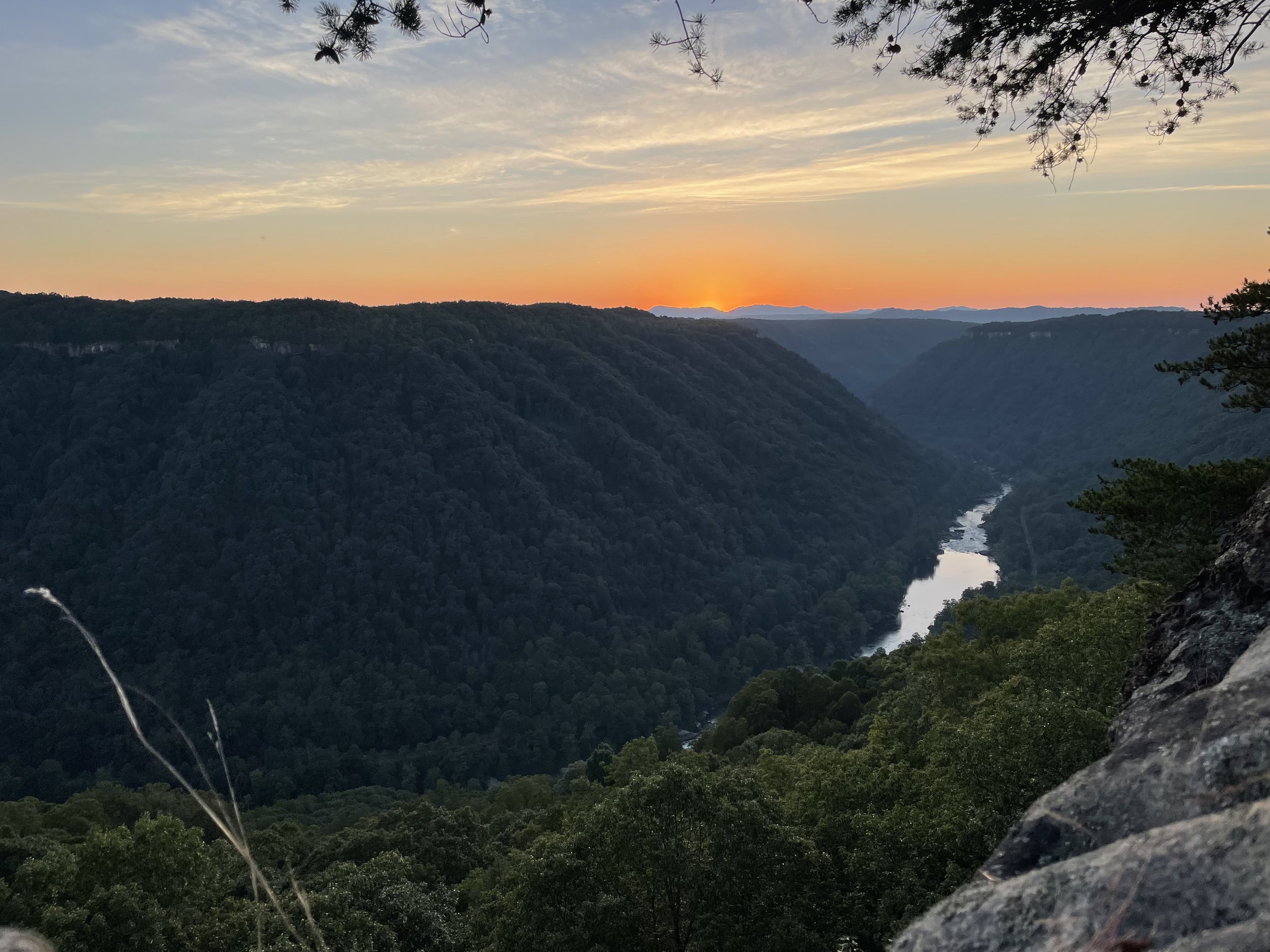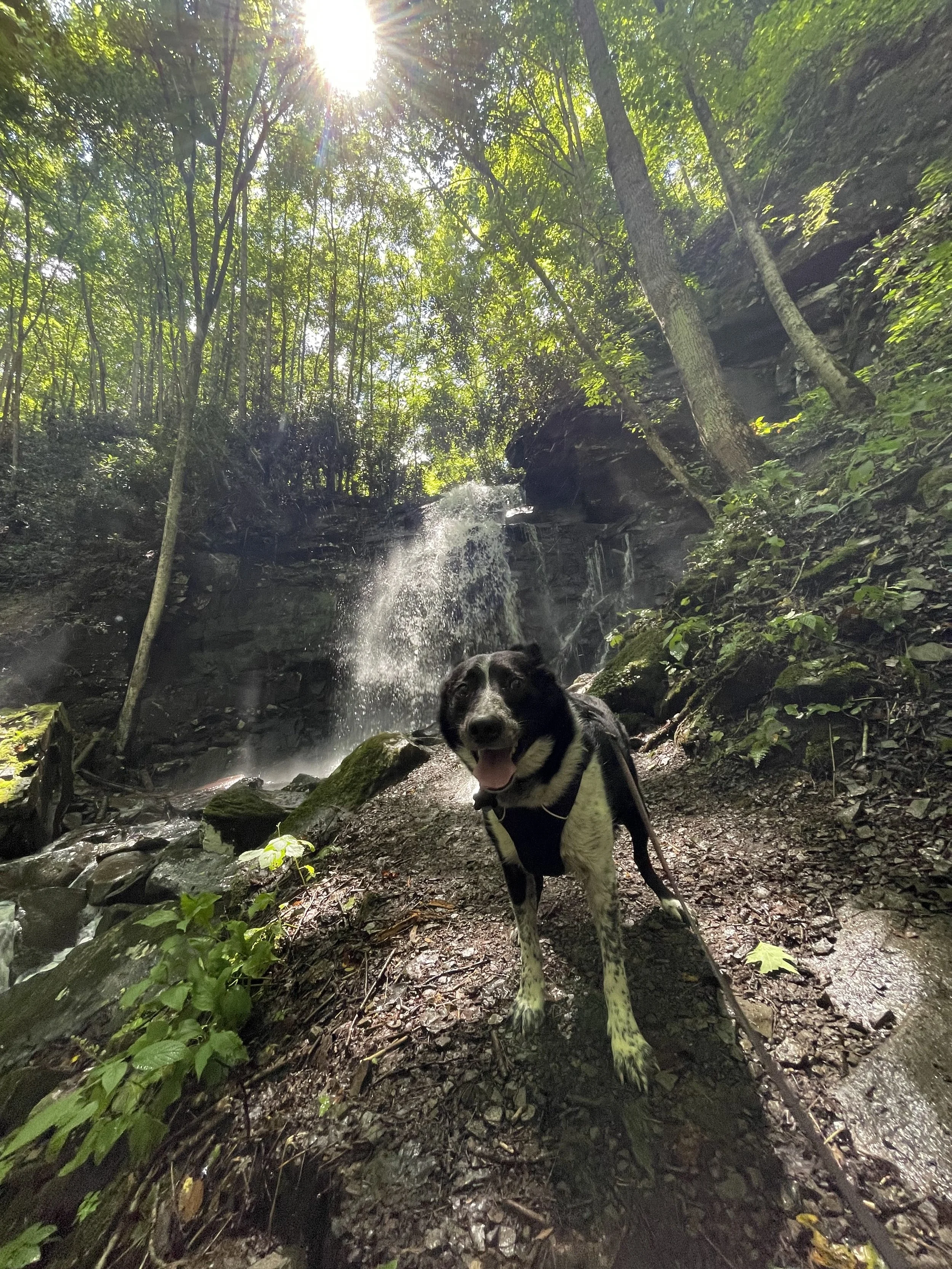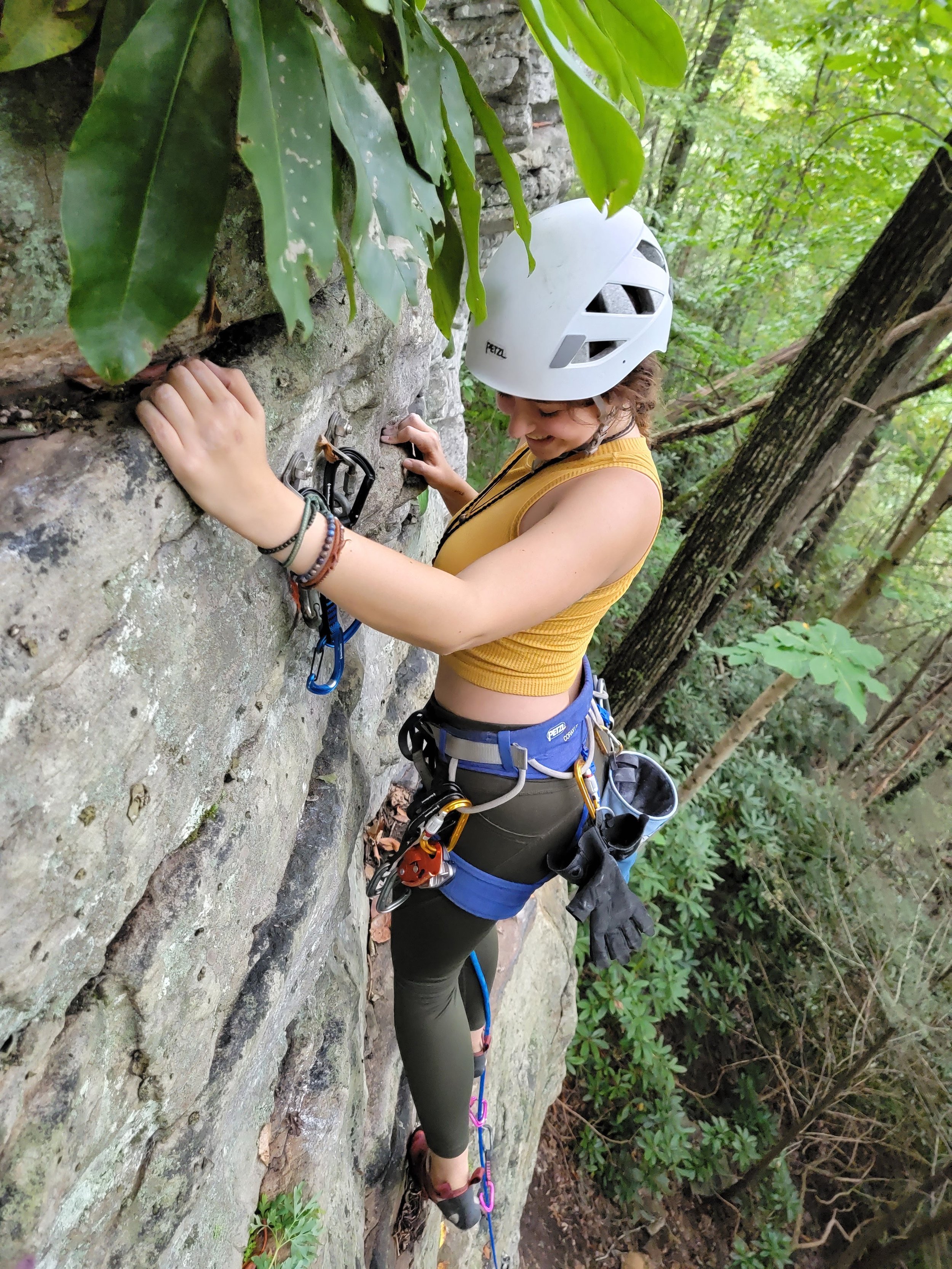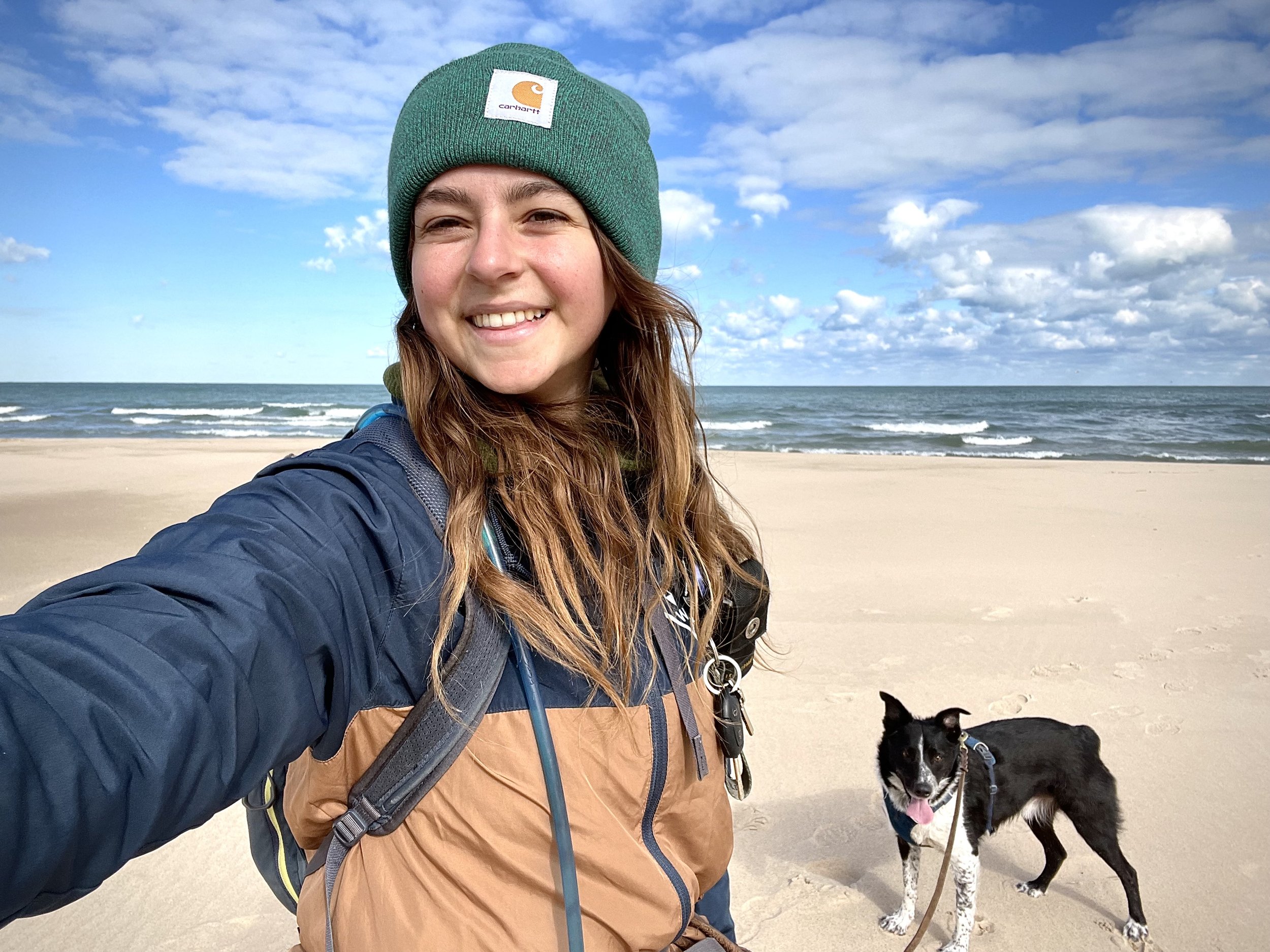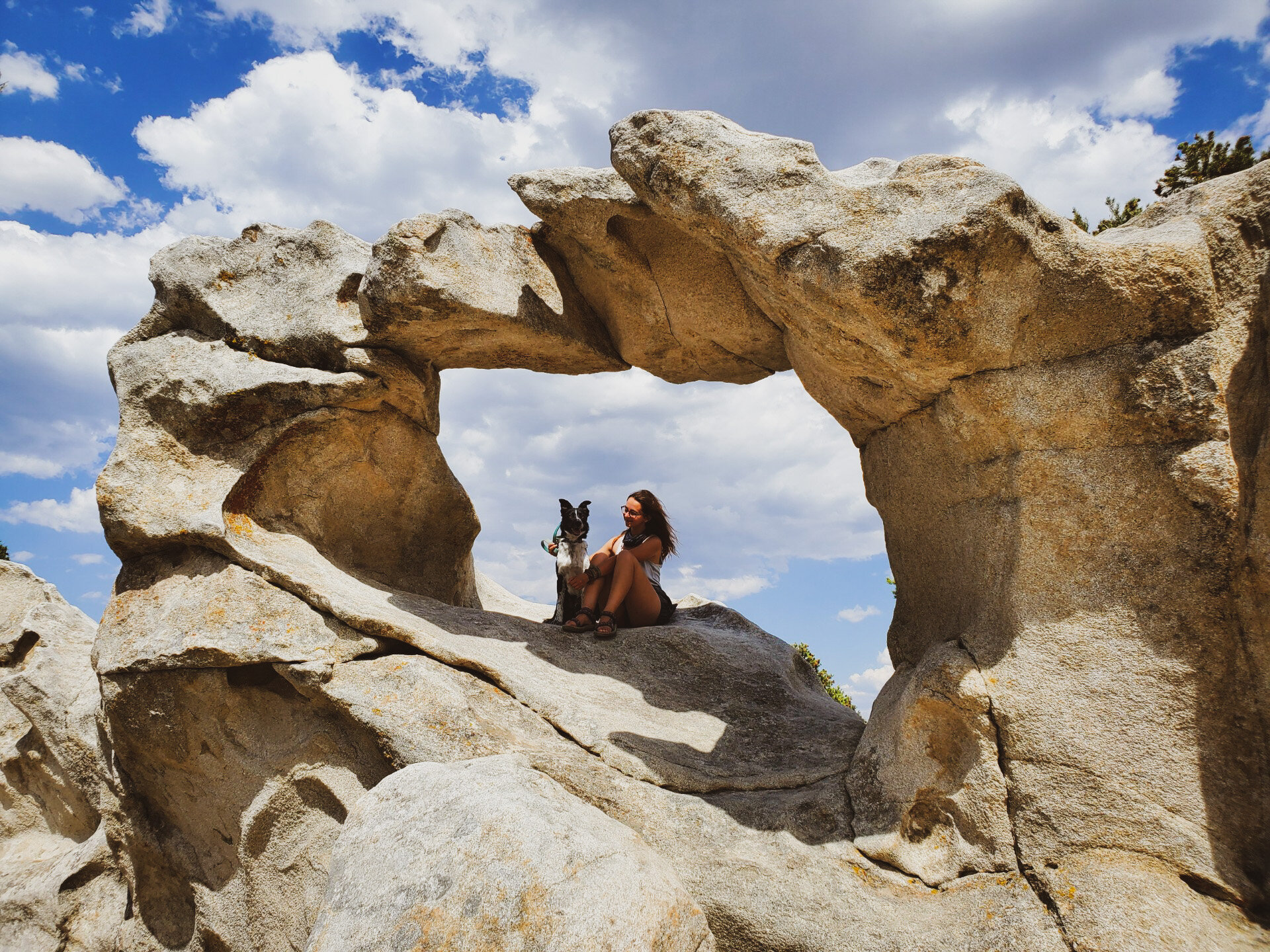Are you looking for the ultimate adventure opportunity in the Appalachian Mountains in one of the most underrated destinations in the country? Welcome to New River Gorge National Park and Preserve, the newest National Park in the United States, and home to one of the oldest rivers in the world (despite its misleading name).
New River Gorge is located in wild and wonderful West Virginia, and is home to some of the most unexpected landscapes on the eastern side of the country. When you picture West Virginia, you might not picture rushing class five rapids, towering sandstone cliffs, and a multitude of waterfalls and wildlife, but you’ll find all of that and more in New River Gorge National Park.
I had the privilege of working as an Assistant Climbing Guide in the park during the summer of 2022, which means I got to spend all of my free time climbing, exploring, and enjoying unexpectedly wild West Virginia. Here are the top 5 things you should make sure you do during your trip to New River Gorge.
Know Before You Go
There are a couple things you should know ahead of your visit to New River Gorge National Park and Preserve. This is all my advice for navigating this park for the first time.
The weather in New River Gorge is unpredictable. Always assume it’s going to rain even if the weather isn’t calling for it. This is considered a rainforest, and showers can come quickly and come down hard. That being said though, summer is absolutely the wet season when it comes to rain. If you’re a rock climber looking for the driest time of the year to visit, we call Fall “send season” for a reason.
Dogs are allowed pretty much everywhere in New River Gorge as long as they’re kept on a leash. Feel free to bring well behaved dogs with you on trails, to the crag, or to picnic areas, and always make sure you have an extra poop bag on you so we can keep our wild spaces wild.
New River Gorge is not your classic National Park where you’ll enter through an entrance station and be within the park the rest of your time. New River Gorge is a park that’s interspersed with neighborhoods, Highway 19, and the adorable town of Fayetteville. The official National Park boundaries are the quarter mile of space surrounding the New River itself. Everything else is still considered “The Gorge” though, and is just as worth checking out while you’re there.
Go Whitewater Rafting
Since New River Gorge National Park is known for the New River, you can’t skip out on going whitewater rafting during your time here. You’ll want to book a trip with one of the local outfitters and the most popular company to raft with is Ace Adventure Resort, although you can’t go wrong with any company that’s going to get you safely on the water.
If you’re traveling with children, you’ll want to keep in mind that there are some age restrictions on the river. If you have young children, you’ll probably want to look into rafting the Upper New River, which only goes up to Class III rapids. Teenagers love the Lower New River, which goes up to Class V. Some companies even offer all day trips that will include time to swim in the river, lunch, and an overall longer adventure.
If you’re visiting in the fall and have a party of people over 16 years old, you might consider the biggest adventure available in the New River Gorge area: rafting the Gauley River. This rafting trip includes some of the most intense Class V rapids in the country (possibly even the world). While this river isn’t within New River Gorge National Park boundaries, it is part of the Gauley River National Recreation Area, also managed by the NPS. The Lower Gauley is slightly less intense if you’re not sure about embarking on the ultimate Upper Gauley adventure.
Rafting on the Lower New just before Fayette Station
Go Hiking
There are lots of hiking trails available in New River Gorge National Park and they all lead to somewhere beautiful. You can pick up a trail guide in the visitor center, but these are some of the most popular trails for finding the best views in the park.
(trail classifications and ratings are my own, based on the available terrain in the area)
Endless Wall Trail
Endless Wall is easily the most famous view in the park. Here, you’ll eventually reach Diamond Point Overlook, where you’ll gain views of some of the rapids and rafters below. This trail is dog friendly, and there are two parking lots. I recommend parking at the first one you’ll pass as you come from Highway 19. You’ll have the opportunity to make the trail a loop by hiking parking lot to parking lot, and if you park at the first lot, the section of this loop that will have to be along the road will be downhill rather than up (unless that’s your thing!).
Endless Wall is about 3 miles round trip, and I would classify this hike as easy.
Long Point Trail
Long Point is the other trail where you’ll gain some million dollar views of the park. Here, you’ll gain views of the famous New River Gorge Bridge and this is one of the best places to catch the sunset in the park. The trail starts off fairly flat and then starts to gain some elevation and rocks on the path toward the viewpoint.
Long point is about three miles round trip, and I would classify it as moderate.
Glade Creek to Kates Falls
Glade Creek is easily my favorite trail in the park, but it doesn’t lead to some incredible viewpoint. Instead, you’ll hike deep into the forest, along the rushing Glade Creek, to the stunning Kates Falls. This trail is fairly flat but long, so be prepared for at least a half day on trail with no cell signal. I recommend parking at the Lower Glade Creek Trailhead as the Upper Trailhead lot is 4x4 access only. Hiking to the falls from the Lower Glade Creek lot is about 9.2 miles one way, and I would classify this trail as difficult. Make sure you keep an eye out for the sign to Kates Falls on the left once you’re about a mile and a half from the bridge, and prepare for flooded trails and creek crossings—trekking sandals would be a great choice for this trail!
Kates Falls
Paddleboard on Summersville Lake
One of the most beautiful places in New River Gorge National Park is Summersville Lake, which is located about a thirty minute drive from Fayetteville. Here, you’ll find hidden waterfalls, climbers deep water soloing, and one of the best sunsets in the park (from the water of course).
Rent a paddleboard or kayak or bring your own to explore this huge and warm lake in the summers, just make sure that you bring a personal floatation device (PFD) for every passenger on your board or boat.
Be aware that some years, in the fall, the lake does get drained, so make sure you check the park website for updates.
The view from Diamond Point on the Endless Wall Trail
Go Rock Climbing
Other than whitewater rafting, climbing is the most popular sport to do in the New. Rock climbers from all over the world travel here, and many end up staying, because of the beautiful Nuttal Sandstone walls, incredible trad routes, and fun sport climbs. There’s even a good assortment of boulders for anyone who’s not stoked on rope climbing.
If you’ve never climbed before, there are outfitters who can take you on your first climbing trip—gear included! I personally worked for Ace Adventure Resort, but other climbing outfitters include Adventures on the Gorge and Appalachian Mountain Guides.
Another great resource for climbing (other than Mountain Project and the local guide book), is the local climbing shop: Waterstone Outdoors. Every employee here is super knowledgeable and wants to help you get on the rock as soon and as safely as possible.
Hal Homel lead climbing in New River Gorge National Park
Explore Fayetteville
There’s a reason Fayetteville is known as the “Coolest Small Town.” Downtown Fayetteville, West Virginia is super cute and has a lot to check out. Other than Waterstone Outdoors, our local climbing shop, there’s a huge assortment of places to visit like the Hobbit Hole, which is the antiques shop, the Great Googly Moogly, which is the local crystal shop, and restaurants like Cathedral Cafe and The Takeout.
Overall, there is so much to see and do in New River Gorge National Park and its surrounding areas, so make the most of it, get out of your comfort zone, and try something NEW.






